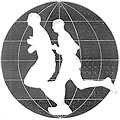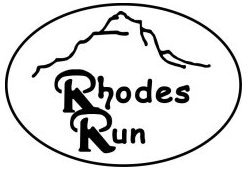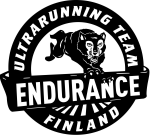World Run II / Reports
|
Loading...
|
|
The map shows the position of which the pictures for the day are taken (if any).
The start and finish markers are placed at the first and last valid registered position.
This is not nessesary the actual start and finish position, if GSM or GPS signals was not available.
|
Goto:
![]() 2011-10-21
2011-10-21
![]() 2011-10-23
2011-10-23
![]() Equador
Equador
Distance today: 44.0 km (Accumulated: 29463.0 km)
Elapsed time: 03:51:15
Country: Equador
Start 09:00am., 7c, allmost clear & light wind, at small km-stone "4.910" on hwy. E35 to Riobamba. Finish 13:48pm., 26c & same, at power-pole number "A34- post32" 1km South of Chunchi village on hwy. E35 to Riobamba.
World Run I memorial marathon
...Each year in October there is a marathon race in Siberia in Russia. Perhaps there are many - but amongst them are a little race organized by some of the runners I met and who ran with me on parts of the long streatch 10500km straight across Russia as part of my first world run (which is why the present one is called wr2 :-).
The main organisor of this Siberian memorial marathon is my old' supportdriver Rachenka who patiently drove an old Lada Stationcar behind me for those 7½months it took to run from the Baltic Sea to the Pacific Ocean at Vladivostock from spring to autumn in 2004. In many aspects I think it was just as taxing an effort for him as the run was itself, as its very remote areas - perhaps some of the last true "Wilderness" areas left on our planet. And a nature so clean and remote like we cant imagine it in Europe or North America, so beautifull and wild that I struggle to find any other place across six continents that can compare w. Siberia. Untill now.
Because Equador, despite its small size (almost as small as tiny denmark, where I come from), has a nature with a varaiety that I cant remember having seen similar anywhere; certainly not in one contry, nor even across one of the 5 other continents in wr1 & wr2 so. Not that Europe, Asia, Australia, Africa and North America hasnt fantastic nature - they do !! But... In some corners of the world there are still pockets of nature stunning to an extend that its difficult to imagine without spending time getting to know them up close'. And Middle- & East Siberia as well as Equador is definately those kind of places.
So its a nice coincidense that I on the weekend where the Siberian World Run Memorial Marathon is conducted this year - am running in the only other place which I feel can truely compare w. Siberias vastness of impressions.
And as each year, mr. Rachenka requests that I run a standard marathon on the day which he organizes the marathon - the weekend in October where I finished the first world run (at Greenwich, London, 23.October 2005; same place where I started the run one year earlier at 1. January 2004).
For this reason I ofcouse also today prepared to run a marathon, and as well very much had to as mr. Rachenka reserved the startnumber 1, to be fitted w. my marathon time on the resultlist. As a way to in spirit run with the fellow runners in Siberia today. A very nice idea indeed - and hugely inspiring for me even though I am far from at competetive pace on marathon anymore :-)
But enough words for now. The pictures from todays stage are online now - and in their own way reminds me of Siberia ! If you want to get an idea of why, then its still possible to visit the old world run 1 website:
www1.worldrun.org - you will find the photo's from the 26 232km at
www1.worldrun.org/photos.shtml & the Siberian section is at www1.worldrun.org/picsphp/3russia_east
When I have rested and taken a little walk in Chunchi' mountain village where I am staying for the night I will add a little more text. Because while the 26 000km of world run one and the so far 29 000km of world run two might seem fairly long - then its in my oppinion definately not the most impressive extreme ultrarun which has been done. The one which I consider the most challenging, most dangerous and most 'gutsy' is perhaps not known by many, not even ultrarunners ! To my knowledge the legend is only told out in the remote parts of East Siberia. But more about that tomorrow... :-)
--- The Story of Ivan Basof ---
Ultrarunning has its outstanding runners, and ofcourse amongst them are all those who completes their first ultrarun (any distance beyond 42km).. Because you will never face a bigger mental challenge as when you for the first time try to go beyond' what you thought possible. Later on the challenges might get bigger and more dramatic - but never as difficult, since you by then already know how well we adapt to obstacles :-)
Yet there are ofcouse runners which are unique in what they achieve, and obviously there are quite a few in ultrarunning too.
From the fast world record runners of the 100km (which is the shortest distance which we have regularly had world championships at, the annual IAU 100km road race) to the 6 & 10 day non-stop races held in Europe, Usa, Africa & Asia each year.
If one wants to go even beyond those challenges there are a very limited amount of events, and furthest of them all - the Sri Chinmoy 3100mile (5000km!) race each year in New York.
And what if one wants to run even longer ?
Then there is only one thing to do: Organize a run yourself !
Amongst the handfull of ultrarunners who have gone looking for the final frontier are runners like
Ernst Mensen (Norway) who perhaps was the first to take up running at this extreme scale, centuries ago doing runs from Europe to Asia and finally a run from Europe to Africa -unfortunally dying of dehydration near the present day border between Egypt and Sudan (I ran past his final restingpoint near Wadi Halfa in Sudan when running through the Sahara Desert earlier on in world run 2 - and certainly had my own worries in respect of both him and the nature he had faced and I was about to duel' with). Also many other cultures has had extreme runners, as for example the Inca runners who brought fresh food to their rulers across vast distances; though hardly comparable w. the distances of Ernst Mensen.
Much later it became possible and 'survivable' to cross the continents by running. There were races across North America already in the early 1900, but the first hard solo run's began in the 90'ties and 2000 years when infrastructure, communication technology and high-level runningshoes made it more likely to succeed in these challenges.
Especially runners like the French Serge Girard is remarkable, having crossed nearly all continents; though one at a time, with months or years between each of his continent-runs. But with daily stages of up to 80km in average (!) using a professional setup with crew-persons and supportcars all the way.
The last step, to run around the world itself in totality, was first attempted at large scale by a british runner who sadly turned out to be cheating during this attempt (Robert Garside, who was found 'fabricating' logbook entries to prove distances which wasnt run - and to this date never having completed a certified ultrarace of any kind ;-). Still, it was inspirational - to get the idea itself, to run right around our planet. And this was what promted me to set out in 2004 from Greenwich Village in the first fully documented run around the world, using the latest gps-technology to prove that it was actually done by running all the way :-)
So, it may seem that the first world run is up there amongst the very large runs. Though, when selecting the continents for the first world run, I chose an East-West route (Europe - Asia - Australia - North America - Europe), which ensured a fair chance of success. But later made me realize that an even larger challenge remained: To run around our planet North - South, which meant not running mainly through the 1.world contries, which is infinately easier than to run through the '3.world'. So the wr2 has its route instead through Europe - Arabia - Africa - South America - North America, with Africa taking up 12 000km and South America 10 000km of the route.
And still; both world run one and world run two are light challenges compared with one particular other run. The run done by Ivan Basof in the 1980'ties !
This russian runner was limited by the cold war era and thus trans-continental run's like the one of Ernst Mensen and us how followed him, was not an option for this citizen of the Soviet Union. Still this fact didnt stop Basof from taking up a challenge which out-scales even the world runs: He set out to run the perimiter of Russia. A run of 40 000km ! And this at a time and a part of the world where such things as comfortable runningshoes and "coushioning" of the impact by advanced eva-materials (the key component of most modernday runningshoes) wasnt avaliable at all. As if this whasnt enough of a challenge, running around the perimiter of the Soviet' meant... The main part of the run beeing in Siberia. And not only Siberia, but the Northern part of Siberia. I dont think anyone can imagine the scale of this challenge.
Even having run across Russia and Siberia myself during the wr1, its a far different thing - since this was done during spring, summer and autumn (2004), on fairly firm roads and with modern support-technology; where Basof struggeled for several years (and winters !!) through Northern Siberia. A place of the world where "winter" means temperatures down below minus 40c. His support: pushing an 'oildrum' on wheels.
Simply beyond comprehension :-)
Now ofcourse one could question wether it was done properly all the way - since the technology to prove it wasnt avaliable by that time. But I very much doubt that its a 'Garside' (who guiness world records by the way chose to print the story of - by overruling their expert on ultrarunning, Andy Milroy, and instead going for the entertainment value; that got to have their founders turning in their grave ;-). The difference beeing not only that Basof wasnt caught cutting' any corners - rauther the opposite making the run as hard as possible. And most of all - by always encouraging local runners to join him (another 'non-Garside' - who notorisously avoided other runners; probably a wise strategy if one isnt actually running). Having co-runners is the most reliable way of documenting that extreme expedition-runs like these are actually done the right way, and all the way. And its one of the reasons that I also myself try to have runners join me whenever anyone wants too - for example sharing the run across Russia w. Alexander Korotkov of Russia and Katzuka Kaihata of Japan, and the first part of wr2 with Sarah Barnett from Australia. Or the upcoming streatch in Colombia with Reino Uusitalo of Finland.
So, in lack of gps-documentation, co-runners and logbooks were Basof's main documentation. In this way he left a trail' all along his route - And this was a trail which I began to notice when I ran the streatch across Siberia in 2004: Old runners who came out to run with me in the remote villages of Eastern Siberia told me of him... This amazing runner who for years struggled through their territory. Later I saw photocopies of logbooks, old photo's - and learned the name of this runner "Ivan Basof".
He may be almost fully unknow by the rest of the world, perhaps even outside Siberia, in this sport of extreme ultrarunning which enjoys the nature more than headlines :-)
But each time I get really worn down in the world run's I take this name out of my memory and examines his challenge compared with mine. And each time I know... That I am not to complain: I have chosen the easy challenge !
NB: As you can see the run ended up beeing 44km today. It was downhill the last 12km's and I couldnt find the breakes' in the legs on a day where I was inspired as on few other days :-) But as the pictures show, I did record a marathon split, 3:42:31h pure running time/4:30h. including supply-stops, photo's & navigation. Embarrasing slow perhaps, as its 2hours from my pb. But that was another period of my life as a longdistance runner - beeing 24y.old and still having fresh legs (2:27h. was what was possible back then; but even that is slow by international standards ;-). The most important thing to me, though, was that I probably enjoyed todays marathon more than any of my competetive races', not least having time to appreciate the sourroundings and re-live moments with my Siberian friends on the other side of the world.











